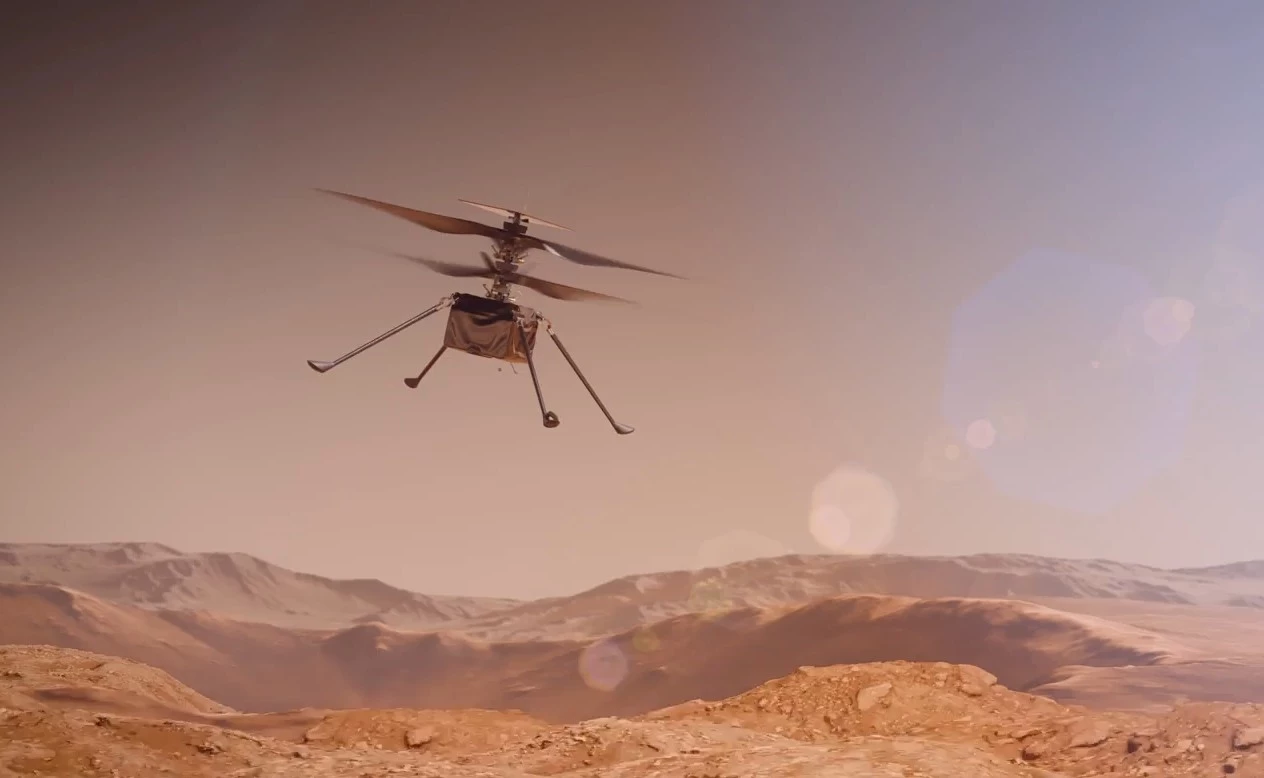Hoping to push Mars exploration into top gear and do recon for a future crewed landing, AeroVironment has released its concept for a mission consisting of half a dozen autonomous helicopters that would land on the Red Planet under their own power.
When NASA sent its Ingenuity helicopter to Mars aboard the Perseverance rover in 2020, the engineers built better than they knew. A demonstrator designed to prove the feasibility of flying machines on Mars, it was only supposed to make five flights over the course of 31 (Earth) days. However, it turned out to be so overengineered that the little robotic copter flew 72 times over 1,004 days before it smashed its rotors in a bad landing.
Today, NASA is so impressed by the record of Ingenuity that it plans to include helicopters on future Mars landing missions and is even planning to send a chopper to Saturn's largest moon, Titan. They'd probably also send one to the Moon if it weren't for that pesky no atmosphere thing.
But AeroVironment in connection with NASA's Jet Propulsion Laboratory (JPL) in Pasadena, California wants to go not one, but six better by sending a flock of helicopters to Mars on a mission called Skyfall.
Apparently someone likes Danial Craig's Bond films.
The idea is to place six helicopters built along the lines of Ingenuity into a capsule made of an aeroshell with a heat shield to protect them as they hit the Martian atmosphere at hypersonic speeds. Once near the surface and slowed to a safe velocity, things get a bit odd. Instead of dropping a landing craft after the heat shield is jettisoned, a framework containing the copters would be revealed. While still in the air, these copters would start up and fly away from the entry capsule, which would crash on the Martian surface as the autonomous aircraft make their own way down.
According to the company, this "Skyfall Maneuver" will greatly simplify the spacecraft design while saving both weight and money. Once on Mars, the half dozen rotorcraft would act in concert as they explore the region around the landing site using cameras and subsurface radar scanners. Aside from general information, the goal would be to seek out areas suitable for a landing by astronauts as well as resources to support a human expedition, including water, ice, and other resources.

Being only a concept, there is no mission date, though the company claims that it could have the spacecraft ready for launch by 2028, which is the next most favorable launch window after 2026. However, there are still some unanswered questions about Skyfall, including how the helicopters would establish communications with Earth without a lander or rover to act as a relay, as was the case with Ingenuity.
"Skyfall offers a revolutionary new approach to Mars exploration that is faster and more affordable than anything that’s come before it," said William Pomerantz, Head of Space Ventures at AeroVironment. "Thanks to a true partnership between industry and government, we’re expanding the unprecedented success of Ingenuity. With six helicopters, Skyfall offers a low-cost solution that multiplies the range we would cover, the data we would collect, and the scientific research we would conduct–making humanity’s first footprints on Mars meaningfully closer."
Source: AeroVironment









